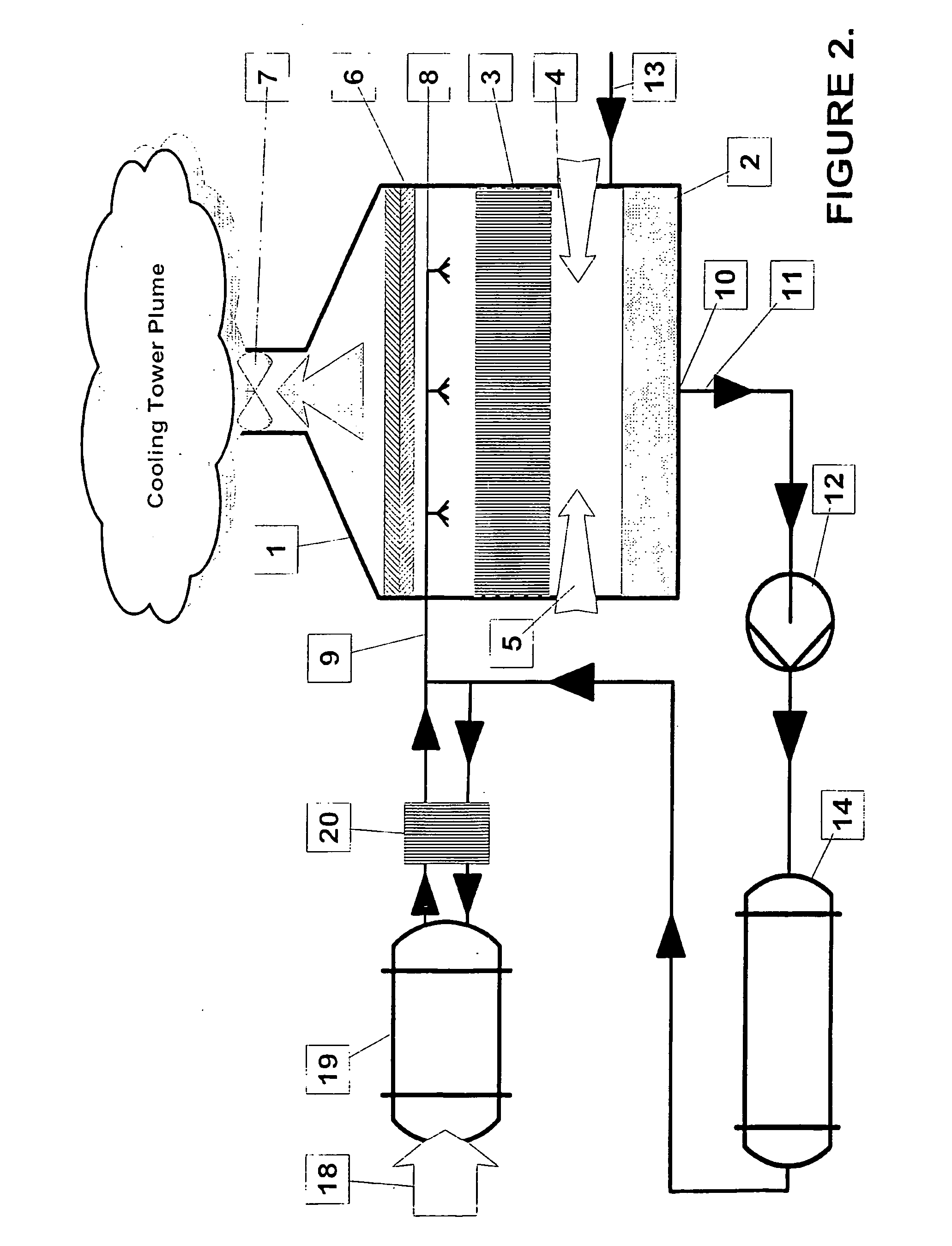Method for controlling legionella in cooling towers
a technology of legionella and cooling towers, applied in the direction of trickle coolers, heating types, specific water treatment objectives, etc., can solve the problems of increasing patient shortness of breath, respiratory failure, health problems, etc., and achieve the effect of reducing the growth of legionella bacteria
- Summary
- Abstract
- Description
- Claims
- Application Information
AI Technical Summary
Benefits of technology
Problems solved by technology
Method used
Image
Examples
Embodiment Construction
[0036] The use of low temperatures for part of the cycle reduces the multiplication of the bacteria. The cycle involves the operation of the cooling water system without chiller heat release to consistently reduce the temperature of the cooling water when not required for heat rejection. The operation of the cooling water system at temperatures close to the ambient wet bulb temperature is carried out after the operation of the chiller, that is when the chiller is not operating. This can be most readily achieved by the operation of cooling water system after chiller operation have ceased and at the colder times of the day.
[0037] The object of the above is to keep the cooling water as cool as is practical when not required for cooling the chiller or other equipment. We have found these conditions reduce the rate of growth of Legionella.
[0038] The attainment of temperatures in excess of 60° C. involves a heating source. This is usually most cost effectively achieved by using the norm...
PUM
| Property | Measurement | Unit |
|---|---|---|
| Temperature | aaaaa | aaaaa |
| Temperature | aaaaa | aaaaa |
| Temperature | aaaaa | aaaaa |
Abstract
Description
Claims
Application Information
 Login to View More
Login to View More - R&D
- Intellectual Property
- Life Sciences
- Materials
- Tech Scout
- Unparalleled Data Quality
- Higher Quality Content
- 60% Fewer Hallucinations
Browse by: Latest US Patents, China's latest patents, Technical Efficacy Thesaurus, Application Domain, Technology Topic, Popular Technical Reports.
© 2025 PatSnap. All rights reserved.Legal|Privacy policy|Modern Slavery Act Transparency Statement|Sitemap|About US| Contact US: help@patsnap.com


